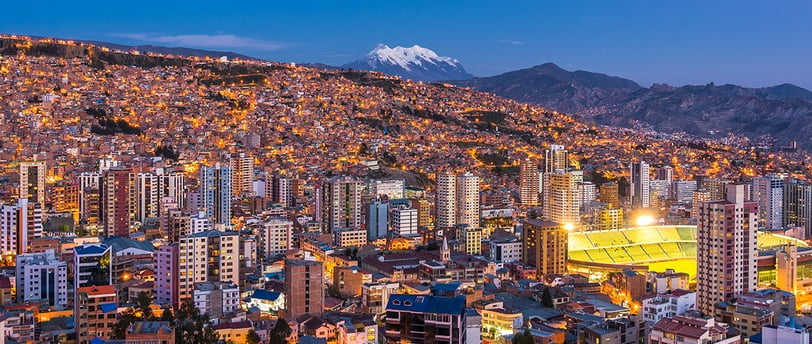Travelling to the South American Andes? Here's how to prepare for the altitude
The South American Andes are a dream destination for many travellers. With iconic sites like Machu Picchu, Lake Titicaca, and La Paz, this mountain range offers breathtaking beauty and cultural treasures. But there’s one aspect of the Andes that can catch even seasoned adventurers off guard: the altitude. As you ascend to the high altitudes of Peru, Bolivia, or northern Chile, the thinner air can lead to altitude sickness, which ranges from mild discomfort to more serious symptoms. But don’t let this deter you—altitude preparation is key to enjoying your journey safely and comfortably. Here’s everything you need to know.
Carolina González
11/12/20242 min read


What to Expect at High Altitudes
In the Andes, many popular destinations sit well above sea level:
Cusco, Peru: 3,399 metres (11,152 feet)
La Paz, Bolivia: 3,640 metres (11,942 feet)
Lake Titicaca: 3,812 metres (12,507 feet)
Uyuni Salt Flats: 3,656 metres (11,995 feet)
At these altitudes, the air contains less oxygen, which can cause symptoms like headaches, shortness of breath, and fatigue. In rare cases, travellers might experience more severe altitude sickness, including nausea and dizziness.
How to Prepare Before Your Trip
Get Fit:
While fitness doesn’t guarantee immunity to altitude sickness, being in good physical condition helps your body cope better with the lower oxygen levels.
Include cardiovascular exercises in your routine before departure.
Acclimatise Gradually:
Spend a day or two in lower-altitude cities, such as Lima, Peru, or Santa Cruz, Bolivia, before ascending to higher regions.
Build altitude into your itinerary slowly to allow your body to adjust.
Consult Your Doctor:
Discuss your travel plans with a healthcare professional. They might prescribe medication like acetazolamide (Diamox), which can help prevent altitude sickness.
Pack Smart:
Bring essentials like rehydration salts, ibuprofen for headaches, and any prescribed altitude medications.
Carry layers to stay warm, as temperatures drop significantly at high altitudes.
Tips for Coping with Altitude During Your Trip
Hydrate, Hydrate, Hydrate:
Drink plenty of water to combat dehydration, a common trigger of altitude sickness.
Herbal teas like coca tea, popular in Peru and Bolivia, can help ease mild symptoms.
Eat Light and Nutritious Meals:
Opt for smaller, frequent meals that are easy to digest. Heavy foods can worsen nausea.
Take It Slow:
Avoid strenuous activities during your first few days at high altitude. Listen to your body and rest when needed.
Use Oxygen When Necessary:
Many hotels and tour operators provide supplemental oxygen for guests experiencing severe symptoms.
Know the Signs of Severe Altitude Sickness:
If you experience symptoms like confusion, extreme shortness of breath, or chest pain, descend to a lower altitude and seek medical attention immediately.
How DHOSA Helps You Handle the Altitude
At DHOSA, we design itineraries that prioritise your well-being. From gradual altitude climbs to expert local guides, our tours help you enjoy the Andes safely. Whether it’s recommending the best acclimatisation spots or providing oxygen on-site, we’ve got you covered.
Bonus Tip: Many DHOSA journeys include stays in cities like Cusco or Puno, offering ideal acclimatisation points before exploring high-altitude attractions like Machu Picchu or Lake Titicaca.
Ready to Conquer the Andes?
Altitude shouldn’t stop you from experiencing one of the world’s most awe-inspiring regions. With the right preparation and support from DHOSA, you can enjoy the Andes to the fullest.
Start your journey today.
Contact us for personalised travel plans that make altitude worries a thing of the past.
